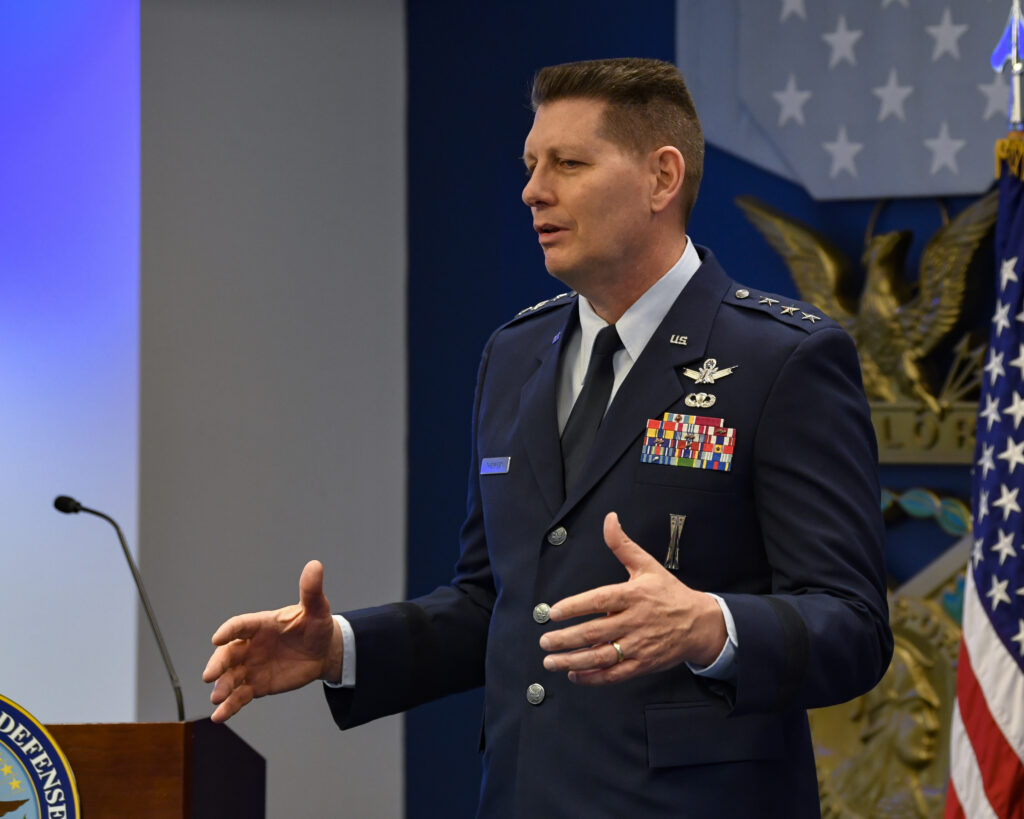 AFA 2020: The Air Force is poised to begin reorganization of how it will transform space acquisition at the end of March and that will require legal changes only Congress can make, says Space Force Vice Commander Lt. Gen. David Thompson.
AFA 2020: The Air Force is poised to begin reorganization of how it will transform space acquisition at the end of March and that will require legal changes only Congress can make, says Space Force Vice Commander Lt. Gen. David Thompson.
The report to lawmakers will make “recommendations for what a new acquisition approach should look like,” he told reporters here in Orlando late yesterday. “As you know, Congress gave us established in law the Space Acquisition Council. That already has formed its set of initial recommendations about how that body is going to function, and a whole series of recommendations to approve primarily the acquisition approach for the Space Force.”
The new council, along with the creation of a new assistant secretary of the Air Force for space acquisition and integration, was mandated by the 2020 National Defense Authorization Act. That person will oversee SMC, the Space Rapid Capabilities Office (SpRCO), and the nascent Space Development Agency (SDA). In October 2022, whoever holds that position will also become the Air Force service acquisition executive for space systems and programs.
As Breaking D readers know, one idea rolling around the Pentagon is to lump SMC, SDA and SpRCO together under a new Space Force entity called Space Systems Command. However, there is internal disagreement on whether all the organizations must be moved and a reluctance to change anything hastily, given that DoD has two years to decide what it wants to do regarding space acquisition and perhaps even convince Congress to change its mind. In particular, there is some question as to whether SDA’s acquisition authority will move from Undersecretary for Research & Engineering Mike Griffin to the new space acquisition secretary.
Thompson suggested that the recommendations would go beyond simply laying out the role of the new secretary.
“The good news is, we’ve been given such a tremendous opportunity that we don’t have to stop there,” he said. For example, “we’re looking at the requirements approach.”
Further, he said, it will include requests to Congress to give the Air Force the “authority to create that 21st century, rapid, clean, agile acquisition force.”
But, he cautioned, while there will be a number of “very specific recommendations,” the report will not include “the full and total and complete bounds of the last dotted i and crossed t of every specific aspect.”
In another of the monthly reports on Space Force due to Congress, the Air Force will explain its “total force management approach” for figuring out how many, and by what process, airmen will be shifted to the Space Force.
Some 16,000 active duty and civilian personnel being “re-assigned” to the Space Force, and eventually will be officially re-commissioned as “spacemen” or whatever moniker is chosen — something that Thompson told the annual Air Force Association meeting here yesterday will happen soon. Those processes are not simple, he said, and will require new legal authorities.
Taking aim: Army leaders ponder mix of precision munitions vs conventional
Three four-star US Army generals this week weighed in with their opinions about finding the right balance between conventional and high-tech munitions – but the answers aren’t easy.


























